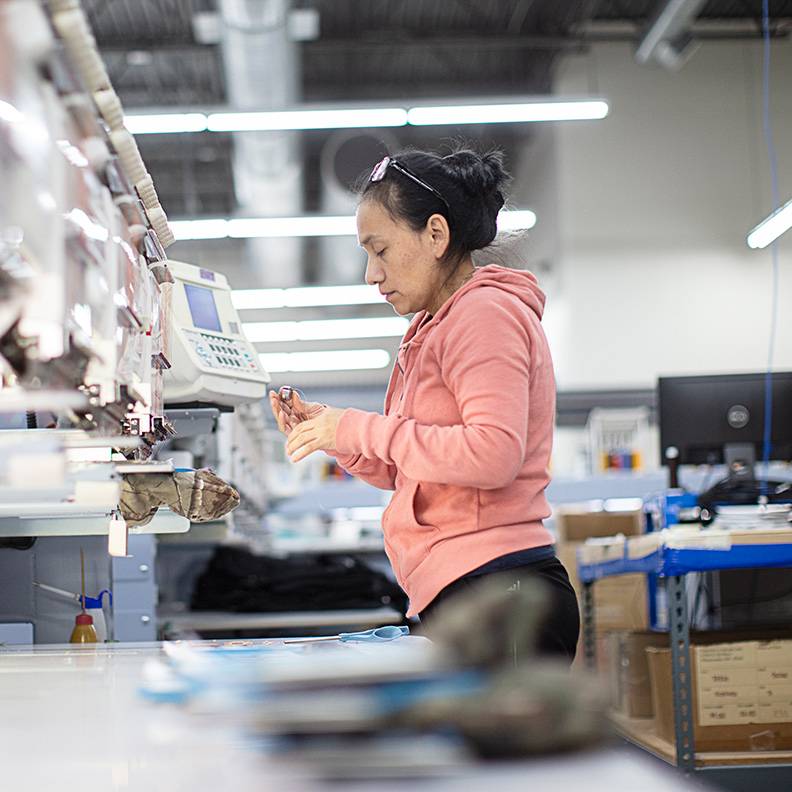It’s been a tough couple of years for manufacturers. COVID shutdowns, worker shortages and recent inflation have all had an impact. The good news is that Enterprise Minnesota’s 2021 State of Manufacturing survey showed that manufacturers experienced a nice rebound in revenue and profitability in 2021. But what was most interesting to me was that, since the inception of the survey in 2008, there’s been a consistent correlation between new equipment purchases and revenue growth. I know, correlation does not equal causation, but if I’m a manufacturer who wants to grow, I’m going to pay attention to revenue growth that consistently aligns with equipment purchases. Investing in new equipment leads to more profit and increased productivity.
Increased productivity
Manufacturing trends and technology are constantly evolving. Relying on older equipment and expecting increased productivity doesn’t make much sense. To maintain your competitive edge, investing in new equipment is critical. Newer equipment helps you reduce repetitive and manual tasks, which frees up your employees to do other more complicated tasks. Even more than that, updated equipment is usually more energy efficient and completes jobs faster and with better quality. New equipment can quickly pay for itself.
Competitive advantage
Your customers can also benefit from your new equipment as their needs change. Your new equipment will allow you to offer additional services and possibly serve new industries. You’ll be able to market yourself more aggressively, because you will be able to offer current and potential customers faster time to market. You’ll be able to adapt more quickly to the changing requirements and preferences of customers. The increased productivity will allow you to offer more capacity for customers.
Happier and safer employees
New equipment is also great for your employees. They’ll experience less down time due to machine failure and better working conditions. Giving your employees the right tool for their job does wonders for their productivity and job satisfaction. New equipment also provides the opportunity for your employees to learn new skills and programs. Newer equipment, especially robotics and those that automate provide upskilling opportunities for your employees.
Robotics and automation also help address labor shortages. It’s no secret that many manufacturers are having trouble attracting and retaining talent. New equipment that automates processes can help move employees out of repetitive tasks they don’t enjoy into more needed roles.
Safety is always a concern in manufacturing and new equipment is usually safer for your employees, as older equipment is more likely to break and cause injuries. Injuries and workplace violations are costly for companies, often much more expensive than purchasing new equipment.
More support
Just like buying a new car usually comes with a warranty, so does your manufacturing equipment. Your older equipment is likely past its warranty and if it breaks, you may not get much support from the original manufacturer. This can turn an equipment breakdown into an expensive ordeal. New equipment typically comes with a warranty including replacement parts and support from the vendor.
Incentives
Funding new equipment purchases can be a roadblock for some business, but there is help available. Purchasing new equipment typically qualifies you for various write-offs, tax credits and possibly even grants. There are also low-cost financing programs available through the SBA and local and state economic development entities. Research the potential tax incentives and work with your CPA, tax advisor, and banker to make sure you take advantage of such programs.
Consider your options
Purchasing new equipment can be beneficial for your business for many reasons, but it is an investment. As with any business decision, it’s important to weigh the benefits and the costs. You should also consider upfront costs, installation costs, the lifespan of the equipment and maintenance needs. Based on the current health of your business, you may decide that leasing equipment is better for you. There are a variety of financing options to help you fund the purchase. Look into an equipment finance loan. This specialized option can provide some flexibility, such as financing over the useful life of the equipment, and even seasonal payments based on cashflow and industry.
